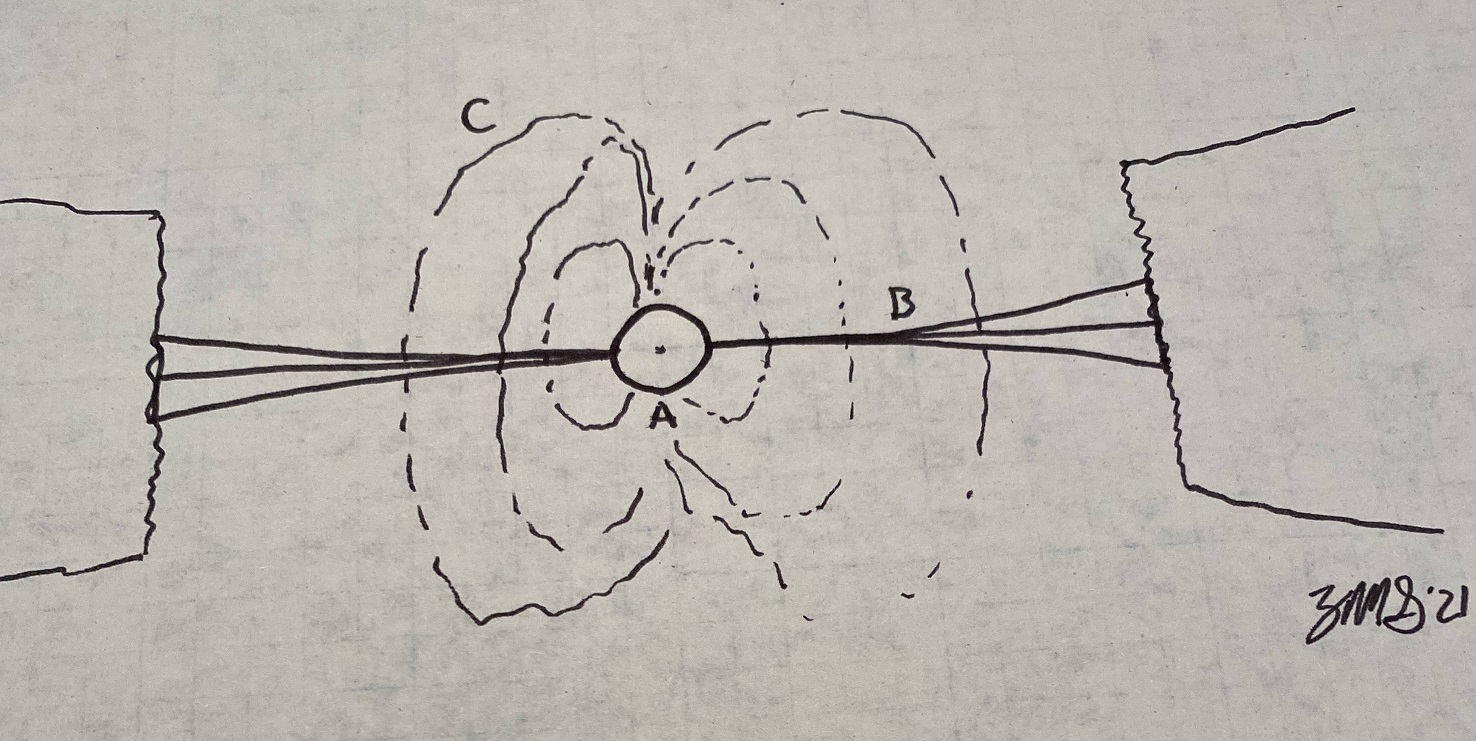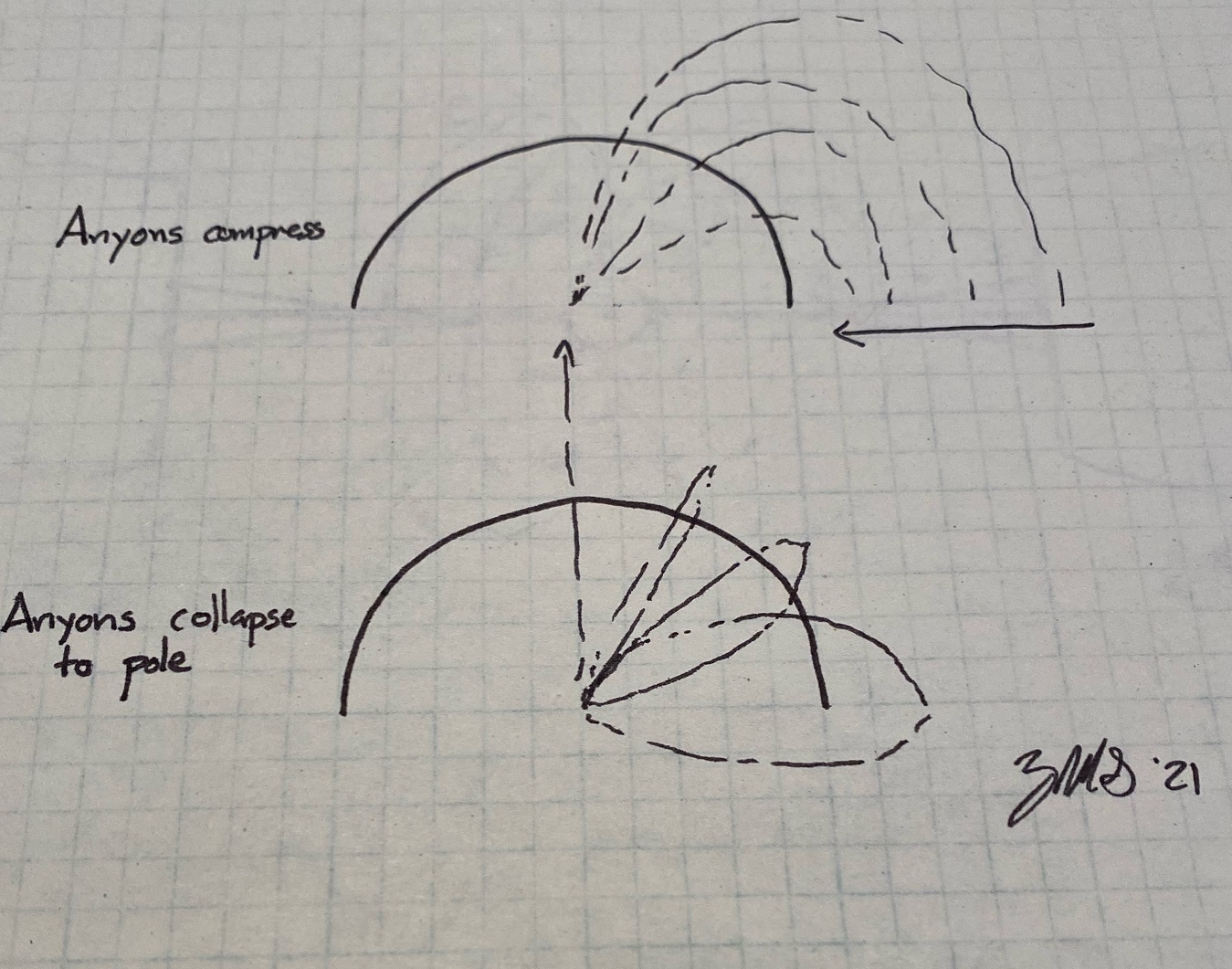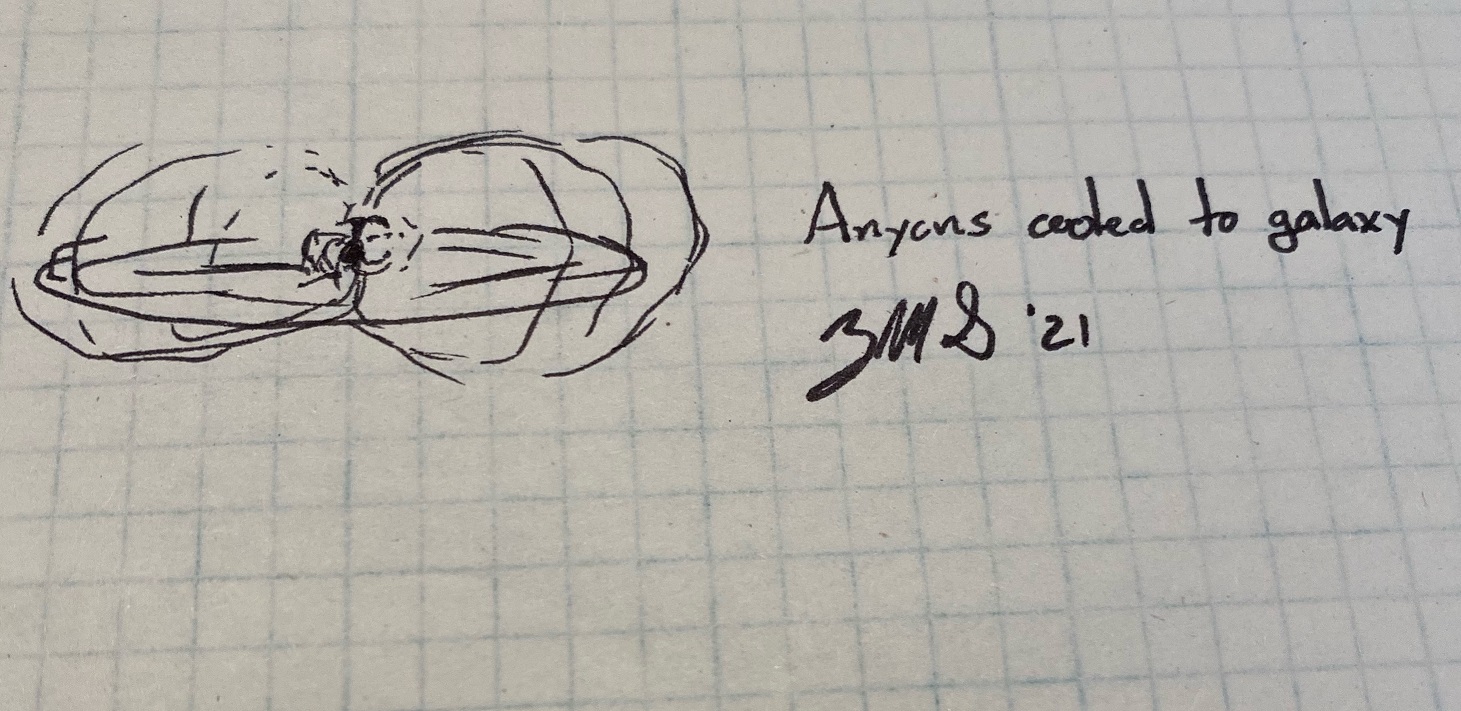Musing About Quasars
These are my thoughts on how recently verified anyons could be related to quasar behavior.
Context
We’ll start out by discussing the three concepts that are involved: quasars, anyons, and topology.
Quasars, Shining Brightly
Quasars are large astronomical objects that we can see shining brightly across the universe. We believe that these are young super massive black holes (like those at the center of galaxies) which are hungrily consuming the matter around them. The intense radiation is generated by interactions within the accretion disk as matter falls inwards.
As very large black holes, the gravitational potential is very gentle all the way past the event horizon.
Anyons, What’s That?
Anyons are a recently discovered type of particle formed by knotting withing a field. In quantum mechanics, information carries energy – so these topological features in fields (or systems) can’t be “lost” until their formation is undone through some mechanism: until then, they’re a relatively low energey, non-local particle.
Anyons can undergo a lot of interactions with other anyons – such as entanglement (in the QM sense) when they become tangled; or fusion when they become bound in a system together.
Knots and 2-Knots
Anyons are a topological feature of wave equations: they’re a particle representing a tangle in the wave equation. Traditionally (and in experiments) we’ve dealt with 1-anyons which are formed by 1-knots in a constricted topology.
However, it’s conjectured that higher dimension analogs exist when formed by higher dimension knots.
Relevant to this idea are a class of object called k-spun toroidal 2-knots. These are formed by placing a 1-tangle along a line of latitude (eg, at the equator) and revolving it around to generate a “knotted” sphere surface. The “k-spun” portion refers to optionally revolving the tangle k-times during that sweep of the latitude to trace out the sphere: imagine a hurricane as it traces the equator of the Earth. The “toroidal” portion refers to using a loop (and forming a torus) rather than a line of latitude (and forming a sphere): toruses can be knotted as well.
Quasars Have 2-Anyons
The first topic we’ll address is whether quasars can manifest 2-anyons within their accretion disk and magnetic field.
Schematic of a Quasar

| Label | Name | Description |
|---|---|---|
| A | Event Horizon | The horizon of the super massive black hole at the center of the system. |
| B | Accreting Matter | The highly energized matter falling inwards towards the black hole, in an essentially disk shape. |
| C | Magnetic Field | The lines showing the magnetic field around the black hole and disk. |
Description of Quasar Anyons
Picture a particle just reaching the edge of the highly energized accretion disk.
This particle is experiencing a force from the magnetic field of the black hole, which arcs above the plane, through the particle, and back below the plane. This magnetic loop through the particle represents one of the cross-sectional circles in the toroidal 2-knot building the anyon… with the particle serving as a tangle in the magnetic field. As the particle circles the black hole, it traces out an approximate toroidal 2-knot. Given the relative size of the loop to the inwards velocity, I believe that this would form a 2-anyon.
Further, since there are many, many particles in the disk, the anyons around the blackhole are actually a fused anyon formed by the linkage of these many anyons tangling as their attached particle(s) in the disk jostle and weave. This anyonic fusion excites the particles within the disk, causing larger swirls within the disk and heating/emissions.
The intense magnetic fields and energey levels found in the accretion disk are then not formed directly by gravity acting on infalling matter, but rather, by gravity compressing the anyons from the time they form at the edge of the energized disk until they reach near the event horizon and driving anyon fusion events within the confines of the disk.
Quasars are heated by anyon fusion.
Quasar Quirks Explained by 2-Anyons
There are two main behaviors about quasars which are explained by anyons (beyond the heating of the accretion disk): high-energy cosmic rays and quasar extinction.
Quasar Anyons as Source of High Energy Cosmic Rays
A topological fact about a wave equation cannot simply be erased: it muse be transfered, transformed, or collapse at a topological defect.
As the quasar compresses the anyons, they try to escape to a topological defect – the only two of which are the poles of the super massive black hole.
As these anyons reach the surface of the black hole, they start to “roll” along the side of the black hole, towards either the top or bottom pole, taking a little bit of matter along with them. The rest of the matter, now free of the anyon pressure outwards, rapidly falls into the black hole.
As the anyons reach the poles, they “pop” and their energy is converted into a kinetic kick of the matter they carry outward along the chosen pole. A single anyon (despite being solar-scale to galactic-scale) wouldn’t carry more energy than a thrown baseball – but imparted onto a single particle as they collapse, this is a massive acceleration.

Quasar Extinction
Quasars extinguish when the anyon fusion “overheats” and causes a fusion explosion in the accretion disk, hurling the mass outwards in an analog to a supernova’s collapse causing rapid fusion heating and explosion. In this case, the “collapse” is gradual as the black hole gains size, but the impact of a detonation from increased fusion overcoming the gravitational pull remains the same.
However, as these anyons fly outwards, they rapidly cool due to their size rapidly growing. At some point, the anyonic cooling stalls the outwards movement of the flung off disk, which retains its position and rotational momentum. These now cold (and virtually non-reactive) anyons and their attached particles of matter continue to orbit the original super massive black hole – now as a galaxy.

Predictions/Calculations
There’s a number of predictions or calculations for known effcts:
- Galactic structure matches the disk banding seeing in black hole images, inflated during anyon detonation.
- The galactic jet asymmetry (as pictured by eRosita) is caused by interactions between the black hole spin and the anyons escaping.
- Star formation is anyon annealing post explosion, as the anyons pull swirls of matter tighter to slightly lessen their own energy: like a twisted cords tightening when the ends are pulled.
- Cold galactic anyons are a sufficient binding force on matter in the galaxy to account for the rotation curves we see: there’s insufficient energy to “expand” the anyons further.
 Z. Michael Gehlke
Z. Michael Gehlke